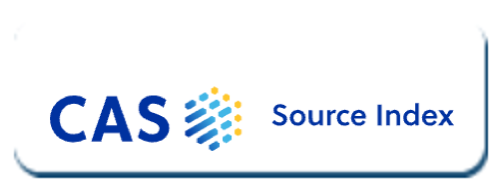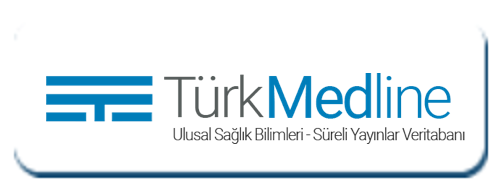Modern aspects of the interaction of medical and pedagogical workers on prevention and detection of disturbances of development and state of health of schoolchildren
DOI:
https://doi.org/10.5281/zenodo.7557407Keywords:
Children's health status, children's well-being, students' nutritionAbstract
A significant impact on the health of children is provided by training in educational institutions, which coincides with a period of intensive growth and development of the child's body. Systematic and long-term exposure to school environment factors accumulates and leads to various health disorders. The degree of influence of school factors also depends on the initial state of health of the child. The development and intensification of school education has exacerbated the problem of maintaining the health of students. Among children who begin regular education, the prevalence of borderline health disorders increases with the formation of chronic pathology in the future, therefore, the search for methods of early prenosological diagnosis and prevention of diseases is especially relevant. In this regard, the World Health Organization defines one of the priority areas to support the health, safety and well-being of children and adolescents. Quality standards have been developed for school health services, which should ensure the improvement of the health of young people in all educational institutions. Despite the recognition that the tasks of preserving and strengthening the health of modern schoolchildren can and should be solved directly in an educational institution, universal and effective forms of organizing the educational process have not yet been found, the issue of optimizing motor activity and nutrition of students has not been resolved. Actual development of new conceptual provisions for the organization of prevention using a systematic approach, changing the role of the doctor as the organizer of school health care and evidence-based integration of the teacher into the system for preventing developmental disorders and the health status of school-age children.
References
Sh AA, Arzibekov AG, Abdumukhtarova MZ, Kh AS, Khafizova ZB. Emotional-Behavioral Reactions And Psychosomatic Experiences Of Patients With Leukemia As An Internal Picture Of Disease In Uzbek Population Children. J Posit Sch Psychol. 2022;6(7):1670–81.
Shodieva MS. Assessment of immune system parameters in children with gastroduodenal pathology. ISJP. 2022;1(7):2.
Baranov AA, Iakovleva TV, Lapin IE. [Children’s health protection in the state political system]. Vestn Ross Akad Med Nauk. 2011;(6):8–12.
Kuchma VR, Safonkina SG, Moldovanov VV, Kuchma NY. Hygiene of children and adolescents in modern school medicine. Hyg Sanit Russ J. 2017;96(11):1025.
Humanitarian action for children 2019 (overview) | UNICEF [Internet]. [cited 2023 Jan 21]. Available from: https://www.unicef.org/reports/humanitarian-action-children-2019-overview.
Abduvaxobovich YM, Olimovich TS, Xalimjonovich MB. Anorektal malformatsiyalar terotogenezida embriogenetik omillarning roli. Медицинская Наука Узбекистана. 2022;(1):04–7.
Murthy S, Adhikari NK. Global health care of the critically ill in low-resource settings. Ann Am Thorac Soc. 2013;10(5):509–13.
Kovtun OP, Anufrieva EV, Nozhkina NV, Malyamova LN. School medicine: analysis of achieved results and search for new solutions. Vestn Ural Med Akad Nauki. 2018;15(1):136–45.
Kuchma VR, Sukhareva LM, Khramtsov PI. Medical and preventive basis for the safe life of children in a hyper-informational society. Ross Pediatr Zhurnal Russ Pediatr J. 2017;20(3):161–5.
Perrin JM. Innovative health care financing strategies for children and youth with special health care needs. Pediatrics. 2017;139(2):85–8.
Ministry of Health of the Russian Federation - The Russian Government [Internet]. [cited 2023 Jan 21]. Available from: http://government.ru/en/department/23/events/.
Novoselova En. Role played by a family in creating healthy lifestyle and eliminating risk factors that cause threats to children’s and teenagers’health. Health Risk Anal. 2019;(4):175–85.
Donabed SG. Persistent perseverance: A trajectory of Assyrian history in the modern age 1. In: Routledge handbook of minorities in the Middle East. Routledge; 2018. p. 115–31.
Rudakovskaya MG, Sulyagina JO. What are the reasons for the joy and complaint of a first-year student?”: analysis of students’ answers to open questions of the questionnaire. Contemp Probl Soc Work. 2019;5(4):109–19.
Ogli Esg. Today the problem of preserving, strengthening and developing youth health is one of the most important and significant medical and social problems at the present stage. Middle Eur Sci Bull. 2022;21:109–13.
Kessler RC, Amminger GP, Aguilar-Gaxiola S, Alonso J, Lee S, Üstün TB. Age of onset of mental disorders: a review of recent literature. Curr Opin Psychiatry. 2007;20(4):359–64.
Lim LV, Abdrakhmanova ST, Skuchalina LN, Aishauova RR. State of mental workability of school children in almaty at the beginning of the school year. IJSP 2022;1(6):6.
Kara A. Current treatments for social anxiety disorder in adolescents: A narrative review. Unicos Rev. 2022;1(1-2):5-10.
Downloads
Published
How to Cite
Issue
Section
License
Copyright (c) 2023 Journal of Clinical Trials and Experimental Investigations

This work is licensed under a Creative Commons Attribution 4.0 International License.
![]() The journal is licensed under a Attribution4.0 International (CC BY 4.0).
The journal is licensed under a Attribution4.0 International (CC BY 4.0).











